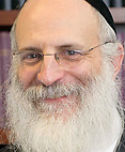HER2/neu-induced mammary tumorigenesis and angiogenesis are reduced in cyclooxygenase-2 knockout mice Journal Article
| Authors: | Howe, L. R.; Chang, S. H.; Tolle, K. C.; Dillon, R.; Young, L. J. T.; Cardiff, R. D.; Newman, R. A.; Yang, P.; Thaler, H. T.; Muller, W. J.; Hudis, C.; Brown, A. M. C.; Hla, T.; Subbaramaiah, K.; Dannenberg, A. J. |
| Article Title: | HER2/neu-induced mammary tumorigenesis and angiogenesis are reduced in cyclooxygenase-2 knockout mice |
| Abstract: | The inducible prostaglandin synthase cyclooxygenase-2 (Cox-2) is overexpressed in ∼40% of human breast cancers and at higher frequencies in preinvasive ductal carcinoma in situ (DCIS). Cox-2 expression is particularly associated with overexpression of human epidermal growth factor receptor 2 (HER2/neu). To definitively interrogate the role of Cox-2 in mammary neoplasia, we have used a genetic approach, crossing Cox-2-deficient mice with a HER2/neu transgenic strain, MMTV/NDL. At 20 weeks of age, mammary glands from virgin MMTV/NDL females contained multiple focal tumors, or mammary intraepithelial neoplasiae, which histologically resembled human DCIS. Mammary tumor multiplicity and prostaglandin E2 (PGE2) levels were significantly decreased in Cox-2 heterozygous and knockout animals relative to Cox-2 wild-type controls. Notably, the proportion of larger tumors was decreased in Cox-2-deficient mice. HER2/neu-induced mammary hyperplasia was also substantially reduced in Cox-2 null mice. Additionally, mammary glands from Cox-2 knockout mice exhibited a striking reduction in vascularization, and expression of proangiogenic genes was correspondingly reduced. Decreased vascularization was observed both in dysplastic and normal-appearing regions of Cox-2-null mammary glands. Our data provide the first genetic evidence that Cox-2 contributes to HER2/neu-induced mammary tumorigenesis. This finding may help to explain the reduced risk of breast cancer associated with regular use of nonsteroidal anti-inflammatory drugs. ©2005 American Association for Cancer Research. |
| Keywords: | controlled study; histopathology; cancer risk; nonhuman; animal cell; mouse; animals; mice; mice, knockout; gene overexpression; breast cancer; gene expression; epidermal growth factor receptor 2; animal experiment; animal model; angiogenesis; neovascularization, pathologic; mice, inbred c57bl; transgenic mouse; heterozygosity; cyclooxygenase 2; nonsteroid antiinflammatory agent; cancer cell; carcinoma in situ; receptor, erbb-2; tumor vascularization; breast carcinogenesis; mammary gland; knockout mouse; ductal carcinoma in situ; mammary neoplasms, experimental; oncogene neu; breast hyperplasia |
| Journal Title: | Cancer Research |
| Volume: | 65 |
| Issue: | 21 |
| ISSN: | 0008-5472 |
| Publisher: | American Association for Cancer Research |
| Date Published: | 2005-11-01 |
| Start Page: | 10113 |
| End Page: | 10119 |
| Language: | English |
| DOI: | 10.1158/0008-5472.can-05-1524 |
| PUBMED: | 16267038 |
| PROVIDER: | scopus |
| DOI/URL: | |
| Notes: | --- - "Cited By (since 1996): 70" - "Export Date: 24 October 2012" - "CODEN: CNREA" - "Source: Scopus" |
Altmetric
Citation Impact
BMJ Impact Analytics
Related MSK Work




